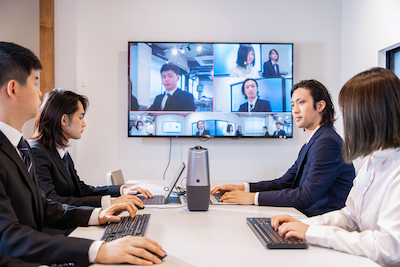.webp)
Doctor Consults about Lowering your Blood Pressure via 4K Video Conference
Your blood pressure is responsible for your heart rate and breathing. It monitors your resting pulse rate, your blood sugar level, and other vital parameters. The more elevated your blood pressure is, the more powerfully your heart races. This is called systolic pressure (SOP) and reduces the amount of oxygenation in the body's bloodstream to reduce friction between its walls and living tissue, which brings about their closure.
When your SOP drops below 130 mm Hg (5in), it means you have low blood sugar (hypoglycemia), which leads to an excess risk of heart disease, without enough healthy adequate levels of red and black cells in our bodies, a heart attack or stroke becomes inevitable — that being the case, our lower backbones should be firmly planted on solid earth with no elevated balances on narrow crannies.
If you find yourself having to fight against gravity every time you try to stand up from a seated position, remember that there are steps available to help lower Blood Pressure (BP). These will help keep you in good shape and reduce the risk of heart disease.
Check out our previous article on Ways to Combat Virtual Meeting Fatigue
What is Blood Pressure?
The definition of blood pressure is “blood flowing through your body at a rate expressed in pounds per minute.” It is made up of two components, arterial and venous. Arterial blood pressure is when an artery in your body is squeezing your veins to make room for a larger one. Your veins are like little fish scales, each with its draft and pressure. Your body’s left and right heart chambers are linked together through veins that make up your left and right ventricles. You may find that your blood pressure reading keeps rising and falling, but it can be very difficult for you to sustain for a very long period.
Exercise for your blood pressure
Exercising your body’s upper and lower cardiovascular muscles can help keep your blood pressure down. Exercising your body’s upper and lower limbs can also help your body’s lower cardiovascular muscles contract to help slow your heart rate. Get your heart rate up!
Exercising your heart muscle is a good idea whether you are just getting started in lowering your blood pressure or you have been struggling with high blood pressure for a while. We’ve listed some tips below to assist you:
- To get your heart rate up, take a heart rate monitor and start a slow walk.
- Put on your favorite running shoes, run with them for a few miles, and/or
- do any exercise that keeps your heart rate up.
The more intense your exercise, the more quickly your heart rate will rise and drop, and the more quickly you will have to stop and take in breath for your lungs to fully develop and expand.
Set a goal to lose some weight
It may surprise you to learn that even low blood pressure is enough to make you heavier. A reduction of 0.1 to 0.2 points in your blood pressure is all it takes to bring you down a few pounds.
Here is a list of some food you may want to consume to lower your blood pressure:
- Fruits like Kiwis, bananas, berries, and watermelon
- Green leafy vegetables like cabbage, mustard greens, and spinach
- Garlic
What to avoid with high blood pressure?
- Alcohol
- Stress
- Salty foods
- Caffeinated food
Follow a proper diet, drink enough water every day to keep you hydrated, and observe a healthy sleeping routine.
Ways to lower your blood pressure
- Exercising your muscles increases blood flow and makes your body more efficient at reaping benefits from them. Exercising your muscles can: Improve your flexibility - Giving your body more freedom to move around will help you feel more mobile, alert, and able to move into stronger positions.
- Improve your balance - Stability in your hips, knees, and feet will allow you to move freely throughout your body, allowing you to absorb more energy and have better control of your breath.
- Improve your concentration - A deep muscle relaxation sound or move will bring your brain into action, slowing your heart rate and making you less responsive to external stimuli.
- Strive for a healthy BP reading - monitor your blood pressure as often as needed.
Having high blood pressure is a serious ailment as it can be associated with heart disease, stroke, and kidney disease. While this article gives you the “what-to-do list” on how to monitor and maintain your blood pressure, it is still best to consult with a licensed physician for the proper ways on handling your blood pressure.
Consult with your Doctors Virtually
Doctors will also give the right treatment for your condition if needed. Book an online appointment with your trusted doctor online via Zoom or Webex. Use the conference cameras like the Coolpo Mini Lite for a simple yet elegant meeting experience!
Whether you’re a doctor or a patient, we recommend using the Mini Lite for your doctor consults. Specially designed for individuals on the go, it has AI-integrated capabilities no matter your use case.
- Single Mode - Enjoy up to 4K resolution using the Wide Angle Mode (120 degrees field of view) when you’re at home or in your clinic.
- Group Mode - Group consults are also possible. The AI focuses on up to 7 in-room participants. This allows the other side to see each individual’s facial expressions. Additionally, there’s a wide-angle shot of the room to get a general “feel of the room”.
Enjoy more than 50 percent discount when you purchase your Mini Lite now!
Conclusion
While there is no cure for high blood pressure, you can take steps to manage it. You can begin with making sure you are getting enough sleep, drinking plenty of water, and eating a healthy diet. You can also exercise regularly, and take daily medication as directed by your doctor.
Talk to your doctor. The best way to manage your blood pressure is to be properly informed about it.
Recent blogs
How Sales Agents Build Stronger Client Connections with a Headset for Cold Calling




%20(1).jpg)





